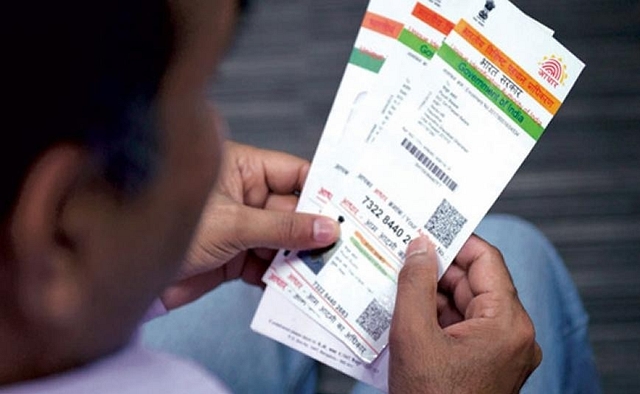
How The JAM Trinity Became The Foundation Of India’s Digital Governance Structure
How the JAM trinity is helping the government to tackle rampant inequality which was hindering India’s growth.
When Narendra Modi took over as the Prime Minister of India in 2014, the biggest challenge before him was not the shambling economy but rather connecting the nation in its entirety.
For over six decades, India had witnessed numerous schemes that facilitated the public distribution system for people across the country – subsidies, healthcare, and so on. However, the supply chain was prone to leakages worth thousands of crores each year, alienating the section of people they were supposed to cater to.
Rampant inequality was another hindrance to the country’s development. With increased digitisation in urban areas, the rural areas were in danger of falling behind.
While the urban population adopted the latest technologies in the field of communication, banking, finance and medicine, people living in the rural areas were not integrated financially, they struggled for necessities due to the leakages in the supply chain, and, in many instances, had no verifiable identification to validate themselves as Indians.
For any government, the challenge in connecting 1.3 billion people is finding the ideal starting point. In 1999, the National Democratic Alliance (NDA) government then proposed an idea for a ‘multi-purpose national identity card’. The United Progressive Alliance (UPA) government improvised on the same idea and the Unique Identification Authority of India (UIDAI) came into being in 2009. However, the idea needed to be put to work smartly.
This is where Aadhaar became an integral component of the JAM trinity. In December 2014, more than 720 million people had enrolled for an Aadhaar card. Fast forward to April 2018, close to 1.2 billion Indians have already been covered under the Aadhaar programme, with over eight states having a saturation ratio (population of Aadhaar cards issued to the population of a state) of over one.
Except for the states in the North East and Jammu and Kashmir, Bihar has the highest saturation percentage at 82.7 per cent.
A significant application of Aadhaar has been helping people open their Jan Dhan accounts. For decades, more than 800 million people in the rural areas of our country were alienated from the financial system. This left them at the mercy of moneylenders in villages and towns who extorted money at exorbitant interest rates, hindered their social development in the process.
By December 2014, over a hundred million bank accounts had been seeded with respective Aadhaar card holders. Enabling efficient beneficiary identification for the government, Jan Dhan accounts plugged the leakages that used to occur in subsidy transfer to people.
The combination of Aadhaar and Jan Dhan accounts has worked well for the beneficiaries. As per the Economic Survey 2015-16, the financial year of 2015 saw 3 lakh new Jan Dhan accounts and 5 lakh Aadhaar card enrolments every day.
As on 30 May 2018, the total beneficiaries under the Jan Dhan programme exceed 316 million. The collective deposits in these accounts exceed Rs 81,000 crore. Additionally, over 238 million debit cards have been issued to facilitate easy withdrawals from the bank.
The third component of the Jan Dhan trinity – mobile phones – have been instrumental in enhancing the scalability of Jan Dhan and Aadhaar programmes. Given how every Aadhaar card and Jan Dhan account warrant an account number to be linked, and with 600 million unique mobile phone users (the total is close to 1 billion) in the country, the components of the trinity complement each other’s scalability, accessibility and sustainability.
Given that the government has rolled out an array of services pertaining to housing, medicare, subsidised fuel and LPG, subsidised bulbs, tube lights and fans, banking, filing IT returns, digital payments and direct benefit transfer, the JAM trinity has now become the foundation of digital governance in India.
A case in point is ‘Pahal’, the scheme for delivering LPG subsidies through the direct benefit transfer route. Slashing the leakages in the supply chain by 24 per cent, Pahal has facilitated the transfer of over Rs 29,000 crore to over 150 million beneficiaries. This success was replicated even in urea distribution.
However, the trinity has its set of challenges too. First, only 27 per cent of the villages in India have a financial touchpoint within 5km. Two, the lack of internet networks in rural areas hinders the mobile component of the trinity. Three, the judicial challenges to the Aadhaar programme have made it difficult for the government to use it for multiple schemes, thus eliminating leakages in the supply chain.
For digital governance in India to excel, there was a need for a strong foundation, and the trinity has offered that. With the easy availability of mobile phones, cheaper data, and call options, and the evolving culture of digital banking, the operational sustainability of the Jan Dhan and Aadhaar programmes is nothing to worry about.
As the government completes 48 months in power, taking stock of its achievements in digital governance, it is a good time to reflect on how far the JAM trinity has come, as it has become the foundation of digital governance, helping connect the government with the country’s 1.3 billion people.